The Evolution of Orchestral Music in Zelda
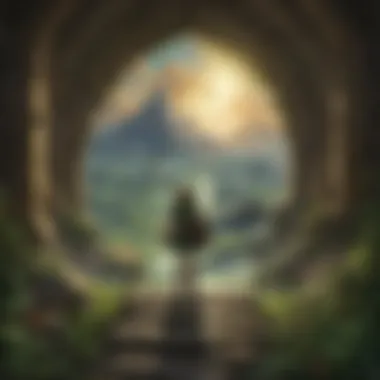
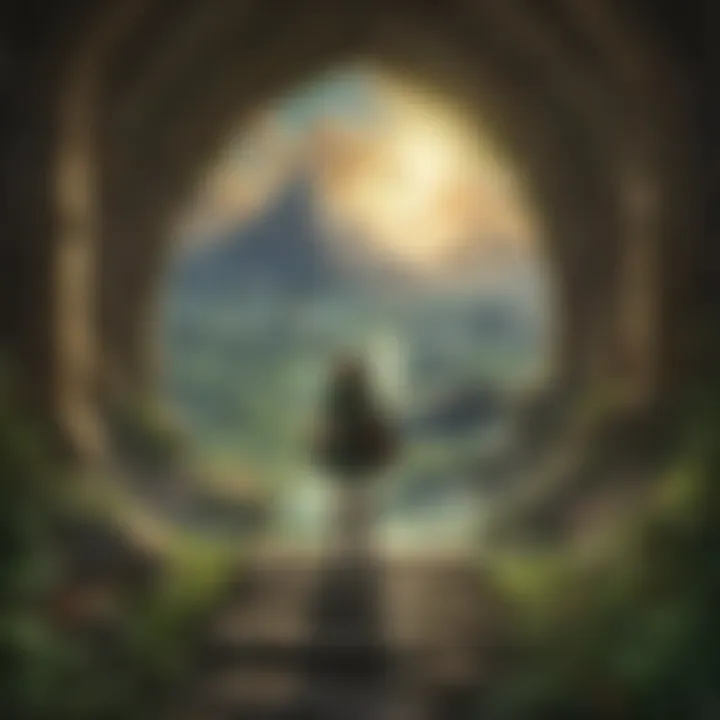
Intro
The Legend of Zelda franchise is not just known for its engaging gameplay and complex narratives. The orchestral music that accompanies these adventures adds a profound dimension to the gaming experience. Orchestral arrangements deepen emotional connections with characters and settings, enhancing the overall immersion into the game world. From its early chiptune roots to modern symphonic compositions, this journey through sound has significantly shaped how players perceive and enjoy the varied landscapes of Hyrule.
In this article, we will examine the evolution of orchestral music within the series, emphasizing critical themes, cultural impacts, and personal insights from composers. These elements come together to illustrate not just musical transformation, but also a transformation in gaming culture itself.
Game Reviews
Gameplay Features and Mechanics
The evolving music in the series often aligns with gameplay mechanics, providing cues that guide player actions. For instance, the iconic "Zelda's Lullaby" signals significant moments in several games. This integration of music with gameplay enhances the interaction between the player and the environment.
Storyline and Quests
Musical motifs often correspond to character arcs and quests. The use of orchestration elevates pivotal narrative moments. For example, the soaring strings during key scenes resonate with the protagonist's struggles and triumphs. This demonstrates how music is intertwined with storytelling, marking it as a crucial aspect of the game's identity.
Visuals and Sound Design
Contemporary entries in the Zelda series, like "Breath of the Wild", use orchestral scores that complement the expansive visuals. As players explore vast terrains, the background music adapts dynamically, enhancing the atmosphere. This shift from simple soundtracks to rich orchestral compositions represents a substantial leap in sound design.
Comparison with Previous Titles
The contrast between earlier games, like "The Legend of Zelda: Ocarina of Time", and modern titles shows a clear progression. Initially, music was synthesized and limited by technology. In contrast, recent games utilize full orchestras, introducing depth and richness previously unattainable. Analyzing how music has transformed provides insight into the series' developing artistic ambitions.
"The score is as integral to the gameplay as the mechanics themselves. It creates a bond between player and story that is undeniable."
— An industry expert
Iconic Themes and Their Cultural Impact
Several themes from the series, such as the "Main Theme" and "Gerudo Valley", have transcended gaming culture, entering mainstream consciousness. These orchestral pieces are performed in concerts worldwide, showcasing the franchise's broader influence. The incorporation of these themes into orchestral settings inspires new audiences while connecting long-time fans to the series.
Composer Insights
Interviews with composers like Koji Kondo reveal their creative processes and inspirations. Kondo's ability to blend traditional musical elements with modern orchestration techniques is a key factor in the series' success. His work illustrates how craftsmanship in scoring significantly contributes to the narrative experience.
Live Performances
Orchestral concerts dedicated to Zelda music, like "The Legend of Zelda: Symphony of the Goddesses", highlight the series' cultural relevance. Engaging audiences beyond the game, these performances elevate the music as a separate entity, often leading to emotional responses from attendees. This phenomenon underscores the lasting impact of Zelda's orchestral journey, as it inspires nostalgia and deeply resonant connections with both new and seasoned fans.
Prelims to Zelda's Musical Landscape
The music in the Legend of Zelda series has played a crucial role in establishing its identity. From the very first game, the melodies have been more than mere background scores; they are integral to the stories being told. Understanding the evolution of this musical landscape gives insights into how it shaped player experiences and emotional connections.
Nintendo's commitment to music is evident in its thoughtful compositions. The audio elements draw players into the world of Hyrule and enrich the narrative, making every quest feel unique. Its layered soundscapes allow for a seamless meld of visuals and play, ensuring that each moment is supported by an appropriate auditory backdrop.
As a result, the musical landscape of Zelda impacts not just gameplay but also cultural impressions. Memorable themes stay with fans long after the game is completed. Each piece of music encapsulates moments of bravery, adventure, and mystery, allowing fans to reminisce over their own experiences with the franchise. Thus, this exploration into the musical journey of Zelda sets the stage for a broader understanding of its thematic evolution.
The Early Days of Zelda Music
In the early stages of the Zelda franchise, music was primarily synthesized using chiptune technology. The original Legend of Zelda, released in 1986, showcased limited but innovative compositions that utilized the NES sound hardware. The iconic themes composed by Koji Kondo, like the main theme and the dungeon music, demonstrated how melody could emotionally connect with the game’s environment.
The limitations of chiptunes did not hinder creativity. Instead, they sparked unique and memorable motifs that have become synonymous with the series. Through clever use of rhythm and melody, early Zelda music established a foundation for future compositions. As players ventured through dungeons and explored wide forests, the music guided them, becoming a crucial part of the experience themselves.
Transition to Orchestral Narratives
With advancements in technology, the orchestration of Zelda music began to evolve. The Legend of Zelda: Ocarina of Time, released in 1998, marked a turning point. It introduced various traditional instruments and complex arrangements. The ocarina itself became a symbol within the game, and its sound uniquely resonated with both the characters and the audience.
Orchestral adaptations began to appear, opening up a broader narrative scope. The lush arrangements added depth to character themes and atmospheric storytelling. Players were not just engaging in gameplay; they were experiencing a blend of story and symphony, a full artistic presentation. This transition highlighted the potential for video game music to stand alongside film scores, enriching the stature of the Zelda franchise.

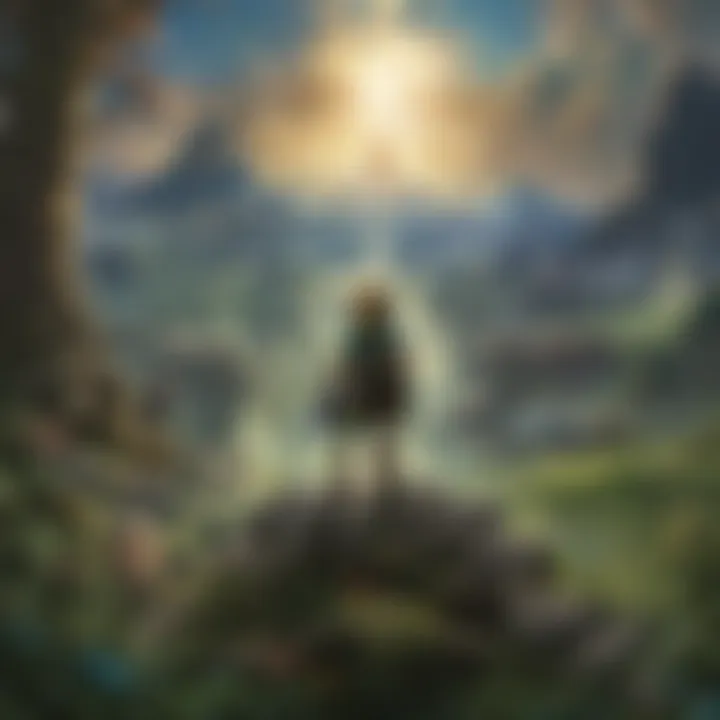
In summary, the shift from simple chiptunes to orchestral arrangements illustrates the growing importance of music in games. It signifies a recognition that sound is a vital part of the storytelling process in interactive media, paving the way for future innovations in auditory engagement.
"Music in the Legend of Zelda series not only enhances gameplay but also deepens emotional connections, enriching the narratives players experience."
Understanding these early days sets the stage for a more profound exploration into the iconic themes that define the series.
The Role of Music in Gaming
The role of music in gaming is multifaceted and significant. Within video games, sound design serves as a crucial element, enhancing the overall experience through various dimensions. Music offers emotional layers, enhances storytelling, and aids in world-building. In the context of the Legend of Zelda series, orchestral arrangements elevate these facets considerably, introducing a richness that supports gameplay and narrative depth.
Emotional Engagement through Sound
Music has a unique ability to evoke emotions. In gaming, this is particularly vital. For players, emotional engagement through sound facilitates a deeper connection with characters and plotlines. In Zelda, themes varied from solemn to triumphant, all evoke specific feelings intended to resonate with gameplay moments.
Iconic pieces like "Zelda's Lullaby" demonstrate this engagement clearly. The soothing melodies create a sense of nostalgia and warmth, inviting players to immerse themselves in Hyrule's adventures. The main theme from the original Legend of Zelda also captures the spirit of adventure, encouraging exploration.
"Music is a universal language that conveys feelings without words. In games, it fills the gaps in storytelling, creating memorable moments." - unknown
Consider how the emotional climaxes within the series align with its musical scores. When Link faces Ganon, the auditory tension heightens, making victories feel monumental. Conversely, softer soundtracks during reflective moments ground the player, allowing contemplation of their journey and mission.
Building Immersive Worlds
Building immersive worlds through music is also a hallmark of successful game design. A well-crafted soundtrack transports players into the game universe, enriching their experience. In Zelda, song and symphony serve to enhance spatial understanding and dynamics of the game environment.
Different areas within the game employ distinct themes. For example, the haunting tones of the Shadow Temple stand in stark contrast to the lively melodies of Kakariko Village. This variety signals to players the game’s atmosphere, telling them how to feel about their surroundings.
Furthermore, the seamless integration of orchestral scores creates a persistent ambiance, making environments feel alive. As players traverse diverse landscapes, music shifts to reflect progression. This layering of soundscapes encapsulates their journey, leaving them with lasting impressions long after gameplay.
In summary, music is instrumental in video gaming, particularly in the Legend of Zelda. Its emotional depth and capacity to create immersive worlds enhance not just gameplay but also storytelling. Music in gaming is not merely background noise; it is a core component that defines the player's experience.
Anatomy of Iconic Zelda Themes
The orchestral scores of the Legend of Zelda series present a unique blueprint that showcases how music can enhance the narrative of a game. These themes are not merely background music; they serve as emotional anchors, connecting players to the characters and the world. Understanding the anatomy of these iconic themes involves examining their melodies, instrumentation, and cultural resonance.
A well-crafted theme often stretches beyond individual notes. It incorporates motifs, which are short, distinctive musical ideas that frequently recur throughout the gameplay. For example, the sound of the Ocarina acts as a motif in the Ocarina of Time game, symbolizing the power of music within the narrative. Each theme contributes to a broader storytelling framework, establishing mood, driving action, and invoking memories.
Moreover, orchestration plays a critical role. The combination of different instruments adds layers and depth to the soundscape. Breath of fresh air in composition comes when traditional orchestral elements blend with electronic sounds. This duality can be seen in tracks like the Main Theme of The Legend of Zelda, where its simplicity stands strong against the evolving complexity of newer compositions.
Understanding these elements allows us to appreciate the themes more deeply and recognize their influence on the gaming community. We will now explore two of the most profound themes in the series:
The Legend of Zelda Main Theme
The Main Theme of the Legend of Zelda is arguably one of the most recognizable video game themes in history. Composed by Koji Kondo, the theme debuted in the first game released in 1986. Its simplicity is striking, comprising just a few notes intertwined with a catchy melody.
From its inception, this theme has set the stage for what players can expect in their adventures. The heroic undertone resonates with every player, marking the start of countless quests. The orchestral arrangements that followed have taken this iconic theme to new heights. In live performances, orchestras have expanded upon Kondo's original composition, adding lush strings and brass that echo throughout concert halls, creating a captivating experience for audiences.
The enduring nature of this theme lies in its adaptability. It has appeared in almost every game in the franchise, continuously evolving while retaining its essence. This legacy highlights the power of a strong musical identity in defining a video game series.
Theme of the Ocarina of Time
The Theme of the Ocarina of Time is another monumental piece in the Zelda series. Introduced in the 1998 game, it not only functions as a theme but also as a pivotal gameplay mechanic. Players use the ocarina to solve puzzles and influence time within the game.
The thematic structure combines gentle melodies with a poignant sense of nostalgia. The sound of the ocarina evokes emotions that resonate deeply with players, often reminding them of their experiences throughout the game. This theme showcases Kondo's skill in creating melodies that linger in the mind long after the game ends.
Live orchestral performances of the Ocarina theme showcase its beauty. Adding string and wind instruments enhances the ethereal quality of the melody. The gradual transition from soft, playful notes to more dramatic crescendos captivates listeners, encapsulating the spirit of adventure found in the game.
The music is not merely accompaniment; it drives the narrative and evokes emotional responses that are integral to the gaming experience.
By examining these themes, we see how they contribute significantly to the growing legacy of orchestral music in the Zelda franchise. They are not just notes on a page but are vivid parts of a larger tapestry that engages players, deepening their connection to the story and the characters.
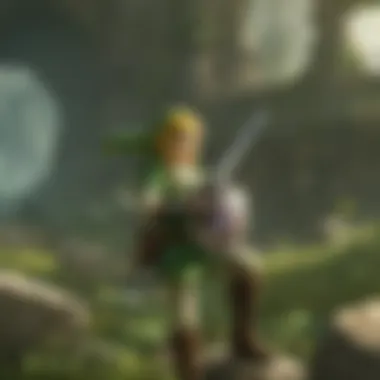
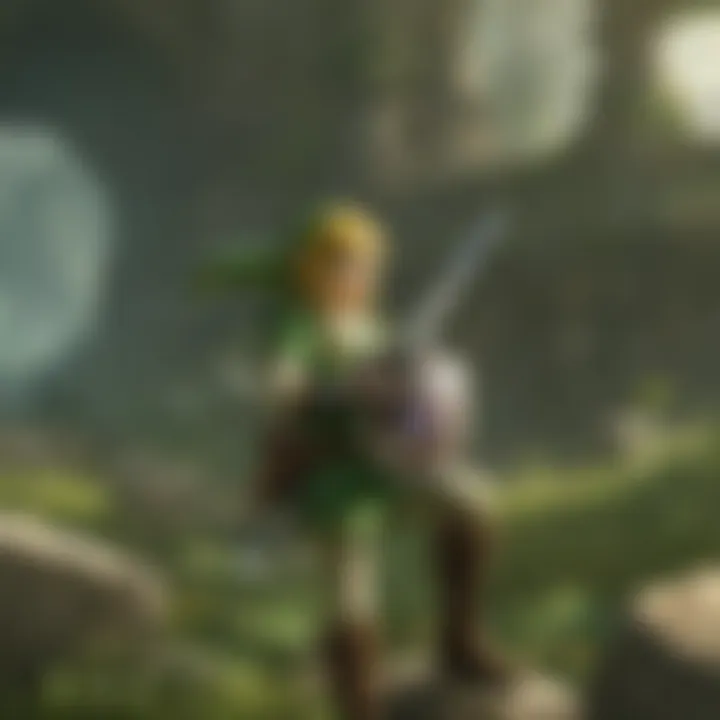
Evolution of Orchestral Arrangements
The evolution of orchestral arrangements in the Legend of Zelda series is a critical narrative thread that underscores the overarching significance of music in gaming. Over the years, this series has transitioned from simple digital tones to intricate orchestral scores, enriching the gamer’s experience and enhancing emotional connections to the narrative. As composers explore new sonic landscapes, they employ orchestral elements that not only elevate the power of storytelling but also contribute to the overall aesthetic of the game. This evolution is not merely a technical upgrade; it represents a profound shift in how music is perceived in video games. The arrangements serve as a bridge between gameplay and emotional engagement, allowing players to invest more deeply in the art and adventure of the Zelda universe.
From Chiptunes to Live Orchestras
At the genesis of the Zelda series, music was crafted using chiptunes, which utilized sound chips to produce distinct, pixelated tones. These early compositions relied on technological limitations, resulting in melodies that were catchy yet simplistic. Titles like The Legend of Zelda and Zelda II: The Adventure of Link highlighted this chiptune approach, effectively establishing memorable themes. However, as technology advanced, so too did the ambition of composers.
With the emergence of more sophisticated hardware, the potential for orchestral arrangements became a reality. The release of The Legend of Zelda: Ocarina of Time in 1998 marked a pivotal moment. For the first time, players could experience a more varied and textured soundscapes, partially due to the game’s innovative use of the Nintendo 64’s capabilities. This transition reached full bloom with the orchestral performances seen in games like The Legend of Zelda: Symphony of the Goddesses, showcasing live orchestras and bringing beloved themes to life in a grandeur never witnessed before.
The journey from synthesized tones to live orchestras has enabled this series to forge a strong connection with audiences both inside and outside the gaming sphere. Orchestral music conveys complex emotions and enhances narrative depth, allowing players to experience joy, tension, and nostalgia in a more profound way.
Blending Classical Elements into Modern Scores
As the gaming industry matures, the blending of classical elements into modern scores has become a hallmark of contemporary compositions in the Zelda series. Composers like Koji Kondo have utilized classical techniques, harmonies, and structures in their works. By incorporating orchestral instruments alongside electronic sounds, they create a seamless blend that appeals to a diverse audience.
For instance, themes from The Legend of Zelda: Breath of the Wild combine orchestration with unique sound design to create an immersive experience. The use of strings, brass, and woodwinds captures the essence of adventure while also bringing a fresh perspective to the traditional Zelda music. Elements such as counterpoint and thematic development found in classical music firmly establish a narrative that resonates with players.
Incorporating classical elements not only enriches the sound palette but also enables greater storytelling. Players witness the growth of characters and the unfolding of plot through musical motifs. As such, this blending of genres exemplifies how the Zelda series remains at the forefront of innovative gaming music, continually pushing boundaries without losing its core identity.
The orchestral journey of the Zelda series exemplifies a commitment to not only innovate but also respect the musical legacies that shape the gaming landscape.
Live Performances and Concerts
The integration of live performances and concerts in the Legend of Zelda series marks a significant chapter in its orchestral journey. These events solidify the connection between the game’s music and its audience, providing an avenue for fans to engage with the soundtrack beyond the confines of gameplay. Such performances serve not only to entertain but to celebrate the legacy of Zelda's music, showcasing the grandiosity of orchestral arrangements in a live setting.
Live concerts allow for immersion in a way that recordings cannot replicate. The experience of hearing the music played by a full orchestra adds depth to familiar themes, enabling fans to appreciate the nuances and complexities of the compositions. The atmosphere generated by a live audience, combined with the visual elements of concerts, enhances emotional resonance, creating a shared connection that is both powerful and unique. As such, the importance of live performances intricately ties in with the broader themes of community and celebration that the Zelda franchise embodies.
The Rise of Zelda Symphony Concerts
The phenomenon of Zelda symphony concerts has grown over the years, reflecting a broader trend in gaming culture that values orchestral arrangements. Concerts like "The Legend of Zelda: Symphony of the Goddesses" began to appear as early as 2012, bringing beloved tunes to life. These concerts featured orchestrated renditions of memorable tracks, alongside visuals from the games that added context and excitement to each piece.
As these concerts gained popularity, they became more than just musical performances; they evolved into multimedia experiences. This experience includes screenings and captivating visuals synchronized with the music played. Often, audiences find themselves transported back to pivotal moments in their gaming experience, as memories are reignited through sound.
In recent years, the trend has not only continued but expanded, with a variety of concerts worldwide catering to different regions and audiences. Various orchestras now embrace the rich tapestry of the Zelda soundtrack, introducing it to new generations of fans who may only associate it with the vibrant culture of gaming.
Audience Reception and Impact
The audience reception of live Zelda performances has largely been enthusiastic and heartwarming. Fans from various demographic backgrounds have come together, united by their love for the series. Feedback from attendees highlights the overwhelming emotions experienced during these concerts, as familiar scores evoke nostalgia and joy.
The impact of these concerts on the broader music and gaming community cannot be overstated. They have catalyzed discussions about the legitimacy of video game music as a respected genre, elevating it to concert stages traditionally reserved for classical compositions. Audience members often describe feeling a sense of pride and connection as they witness the artistry of composers both past and present.
Furthermore, critical responses have led to increased recognition of composers such as Koji Kondo, giving them a platform to discuss their work and contributions. Many in the audience report a deeper appreciation for the musical scores post-concert, often leading to renewed interest in revisiting the games themselves.
Cultural Impact and Reception
The cultural impact of the orchestral music in the Legend of Zelda series extends far beyond the confines of a gaming experience. It is a critical aspect that shapes not just how players connect with the game but also how the broader entertainment industry views video game scores. Over the years, the music has become a cultural icon, often studied and analyzed for its innovative approach and emotional depth. This journey through sound has not only enhanced player engagement but has also forged connections among diverse audiences who share a love for gaming and music.
The passage from simple 8-bit tunes to full orchestral arrangements mirrors larger trends in media convergence, where gaming and traditional musicianship converge. As such, it prompts discussions on the validity of video game music as an art form. The symphonic arrangements have served to legitimize video games in the eyes of critics and enthusiasts alike, fostering appreciation for this unique blend of storytelling and sound design.
Influence on the Gaming Community
The orchestral scores in Zelda have influenced not just those who play the games but also those who create them. Composers like Koji Kondo set a high bar with rich melodies that imbue the game with an emotional resonance. As a result, the gaming community has witnessed a growing demand for more sophisticated soundtracks.
Players often associate specific themes with moments of nostalgia, evoking feelings that are integral to their gaming experience. This emotional tethering enhances community bonding. Players frequently share their favorite scores on social platforms such as Reddit and Facebook, creating lively discussions around particular pieces and their significance within the narrative.
- The growing popularity of concert adaptations, such as The Legend of Zelda: Symphony of the Goddesses, illustrates how these scores resonate at a communal level.
- Fan-driven events and orchestral covers underline the aesthetic influence of Zylda’s music in fan culture.
"The music is not just background; it’s part of the storytelling. It elevates our experiences, deepens our connections to the characters and the journey." - Deep analysis by a community member.


Recognition in the Broader Music Sphere
Orchestral music from the Legend of Zelda has found appreciation in highbrow music circles, establishing a cross-genre appeal. Notable orchestras around the globe have arranged performances that not only celebrate the music itself but also reinforce its cultural significance. The compositions, originally intended for interactive experiences, have transcended into concert halls, elevating the status of video game music.
In recent years, academic institutions have begun incorporating the analysis of game scores into musicology courses, recognizing the complexity and artistry behind these works. As a result, various awards recognizing achievements in gaming music are gaining traction:
- The BAFTA Games Awards now include categories for original music, showcasing the industry's commitment to quality compositions.
- The Rise of dedicated categories in other music awards also highlights the significance of gaming music on a larger scale.
The continuous dialogue around the music of Zelda is indicative of its lasting influence in the wider cultural landscape, bridging the gap between gaming, performance, and scholarly analysis.
Interviews with Composers
Interviews with composers provide an invaluable glimpse into the creative process behind the music of the Legend of Zelda series. They reveal how music has been designed to complement gameplay, immerse players in its rich narratives, and evoke emotional responses. Much can be learned from what these talented individuals have to say about their work, as composer insights can articulate how orchestral arrangements have evolved over time and the motivations that drive their artistic decisions. These discussions shed light on collaboration among musicians, the challenges of scoring for both traditional and modern settings, and how each composer channels their unique experiences into the music. Furthermore, the interviews underscore the integral role of music in the overall identity of the franchise, shaping what fans hear and feel during their adventures in Hyrule.
Insights from Koji Kondo
Koji Kondo is not just a composer; he is the musical heartbeat of the Zelda series. His work has profoundly influenced how players perceive the world of Zelda. In his interviews, Kondo often discusses his process of merging thematic material with gameplay elements. He emphasizes the importance of crafting themes that resonate emotionally with players while also enhancing the gaming experience. His melodic choices are often simple yet powerful, creating an easy connection between the player and the narrative.
For instance, Kondo mentions his fundamental goal: to evoke emotions that align with the gameplay’s context. He takes inspiration from various musical traditions, blending them into a cohesive score. Kondo’s approach exemplifies how essential it is to listen to the game’s story and characters. Additionally, his insights into live performances show a belief that orchestral renditions can heighten the appreciation of his work. The transition from synthesized sounds to full orchestras, for Kondo, is not just technical; it is an evolution that allows for richer expressions.
Perspectives from Modern Composers
As the landscape of video game music continues to evolve, modern composers are infusing new ideas into the Zelda series. Their perspectives, often shared in interviews, highlight the ongoing dialogue between tradition and innovation. These composers recognize the legacy of Kondo but aim to build upon it by experimenting with new soundscapes and techniques.
Many modern artists discuss the integration of varied genres, such as electronic and jazz, alongside orchestral arrangements. They reflect on how technology has shaped their work, allowing them to explore more complex compositions and broaden their sonic palette. For instance, composers like Laura Shigihara and Eimear Noone often mention the necessity of cultural influences in their music. Their thoughts on collaboration with established musicians exhibit a rich exchange of ideas that both honors and reinvents Zelda's musical roots.
Furthermore, these composers provide insights into fan expectations. They often feel a responsibility to respect the established themes while also providing fresh interpretations. This dual approach ensures that every new entry in the franchise feels both nostalgic and innovative. Their discussions reveal a shared understanding that music is not merely background; it is a vital component of storytelling within the Zelda universe.
The Future of Zelda Orchestral Music
The future of Zelda orchestral music holds much promise. As technology advances, composers have more tools to create rich auditory landscapes that resonate deeply with players. This growth creates opportunities for more immersive experiences that blend sound with gameplay, making the music not just a backdrop but an integral part of the narrative.
What is evident is that the gaming landscape is evolving. Players expect more than just visual stimulation; they seek emotional connections and memorable experiences. The orchestral music in Zelda has always served this purpose, but it is poised to take on new forms.
Trends in Gaming Music Composition
Several notable trends are emerging in gaming music composition. Composers are increasingly exploring interactive scoring. Music is not merely pre-composed; it adapts in real-time to player actions. This approach enhances the experience, allowing players to feel as if they are actively participating in the musical creation.
Additionally, hybrid orchestration is becoming popular. This technique blends traditional orchestral instruments with modern electronic sounds. Such combinations open new pathways for creativity. Rather than relying solely on orchestral arrangements, composers can experiment with a variety of textures and sounds, creating something fresh and exciting. This movement is significant and could redefine what we expect from music in games.
"The integration of real-time adaptive music could take the emotional impact of Zelda's score to unprecedented levels."
While orchestral staples will remain, we can expect to hear more diverse influences from various musical styles and cultures. This evolution reflects the global nature of gaming today. As Nintendo continues to push boundaries, the music will likely follow suit, providing a wider array of sounds, and reaching out to a broader audience.
The Next Generation of Zelda Music
The next generation of Zelda music is likely built on collaboration. Composers from various backgrounds will likely come together to create unique scores. This type of collaboration can lead to richer soundscapes, showcasing multiple perspectives and techniques.
Moreover, as gaming consoles improve, the quality of orchestral recordings will also enhance. Higher fidelity allows more nuance in performances. It means that subtleties in orchestration can shine through, creating a more impactful listening experience.
We can also anticipate a greater emphasis on storytelling through music. Composers will likely draw inspiration from not only the gameplay but also from literary and cinematic influences. Each score may become a deeper reflection of the characters and themes.
Finale
The conclusion serves as a pivotal point in reflecting upon the extensive journey of orchestral music within the Legend of Zelda franchise. The evolution of its soundscape—from pixelated chiptunes to fully orchestrated compositions—has been crucial in shaping the identity of the series. Each transition not only reflects technological advancements but also enhances the emotional depth of gameplay, engaging players on multiple levels.
Summation of the Orchestral Journey
In this article, we detailed several key aspects of Zelda's orchestral journey. We began by exploring the origins of its music, recognizing the early contributions of Koji Kondo and how those simple melodies laid the foundation for future compositions. As the franchise progressed, we examined the gradual shift towards more complex orchestral arrangements that began in titles like The Legend of Zelda: Ocarina of Time and reached new heights with recent projects like The Legend of Zelda: Breath of the Wild. Ultimately, this trajectory showcases how music in Zelda complements its storytelling and gameplay, thereby enhancing the immersive experience for players.
Additionally, we discussed important live performances such as The Legend of Zelda: Symphony of the Goddesses. These concerts have not only celebrated the music of Zelda but also brought together generations of fans. The impact of these performances resonates, reminding us of the communal experience that music can create.
Final Thoughts on the Legacy of Zelda Music
The musical legacy of the Legend of Zelda extends beyond the confines of gaming. It has influenced countless musicians, composers, and fans worldwide. Throughout this article, we have highlighted the cultural significance of Zelda’s orchestral music and its ability to evoke nostalgia and excitement. The continuing evolution hints at an exciting future where new compositions will likely build on the established foundation while also integrating modern techniques. As gaming continues to evolve, so too will the symphonic narratives within the Zelda series, ensuring that its music remains a vital part of its identity.







